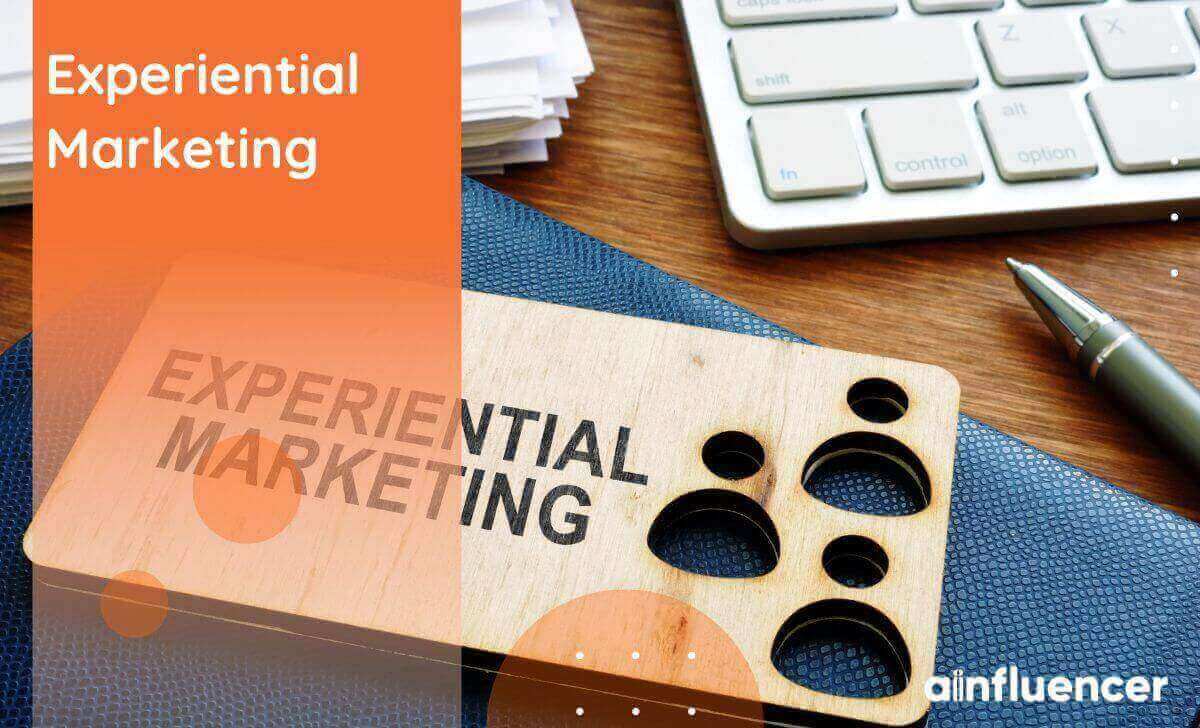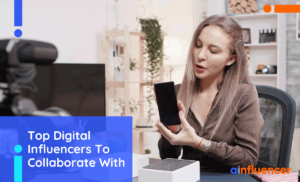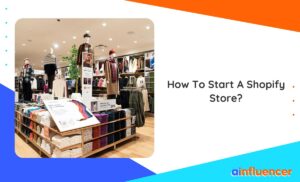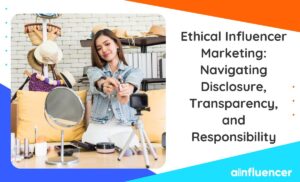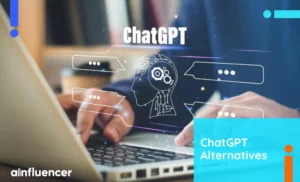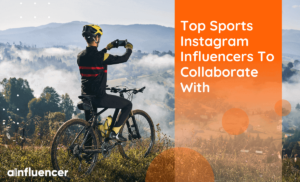If you’ve launched a product but have yet to reach as many people as you’d like, you should consider experiential marketing. In today’s fast-paced world, it’s not just about the product itself that attracts people to a brand but how they experience it. Experiential marketing focuses on creating memorable experiences for customers.
Experiential marketing, engagement, or event marketing aims to shape memorable emotional connections with customers. It involves creating fun and engaging experiences that involve customers directly, like events or interactive campaigns. So, it helps you to increase your brand awareness and customer loyalty.
So buckle up because we’re going to the event marketing in detail. Let’s get started with the definition of experiential marketing.
What Is Experiential Marketing?
Directly interacting with consumers in unique and memorable ways is at the heart of experiential marketing. It’s a broad category that goes by the names ‘engagement marketing,’ ‘live marketing,’ and ‘participation marketing.’
Have you ever been drawn to a restaurant just because of their appealing Instagram pictures or an Instagram influencer’s experience? If yes, you’ve felt the power of experiential marketing.
Experiential marketing means making a special experience for customers instead of just using traditional marketing. Making an enjoyable and different experience helps build a connection with customers and makes them curious about a brand and its products.
Experiential marketing is defined by different names, such as XM, engagement marketing, or ground marketing. Usually, it’s part of an ongoing event or the event itself. The people who do this are called experiential marketers. These marketers focus on creating marketing strategies that increase brand awareness and make customers want to be part of an event and take action.
Now, let’s find its benefits.
Read Also: Winning Customer Engagement Strategies
The Benefits of Experiential Marketing
If you’re looking for a winning eCommerce marketing strategy, then experiential marketing is a great way to connect with customers uniquely and memorably. Here’s why it’s so beneficial:
1. Boost Brand Awareness
Experiential marketing helps people become more familiar with your brand, making them more likely to remember it when they’re ready to buy.
2. Build Customer Loyalty
By creating enjoyable experiences, you can keep customers returning for more and even get them to recommend your brand to others. Having loyal customers is super important for a business to succeed. You need to attract your target customers and keep them happy so they return for more. Happy customers also tell their friends and family about your brand, which helps spread the word.
3. Humanize Your Brand
Interacting directly with customers makes your brand feel more personal and authentic, setting you apart from competitors. Imagine hosting a community picnic sponsored by your clothing line, all thanks to your clothing brand. People come, they meet you and your crew, and it helps them feel like they know your brand better.
4. Make Your Brand Stand Out
Memorable experiences help your brand cut through the noise of other marketing tactics and leave a lasting impression on customers. Another suggestion is to organize an enjoyable game around the town where people can discover your new app. It’s a unique experience that sticks in people’s minds and makes them remember your brand long after the game ends.
Amazing? That’s one of the ideal experiential marketing examples.
Read Also: The Impact of Influencer Marketing on Consumer Behavior
5. Enhance Engagement
When customers have fun interacting with your brand, they’re more likely to be interested in what you offer and build a relationship with it. Making your brand fun and interesting helps increase brand engagement. Customers who have a good time with your brand are likelier to try it out. This is a great way to show them how your product or service can solve their problems and build a connection with it.
6. Go Viral
In the past, marketing was pretty straightforward, like showing demos in stores. But now, getting your brand out there on social media and other online platforms is important. When your brand goes viral, many people see it, which can boost your sales and help your brand grow. Experiential marketing can create opportunities for your brand to go viral by showing off your product or service in action, making people want to share it online.
7. Establish Trust
Giving customers a chance to experience your brand firsthand helps build trust and long-lasting relationships. As an experiential marketing example, consider hosting a cooking class to showcase your kitchenware brand. This allows potential customers to see the quality of your products firsthand and connect with your brand personally.
8. Try products out in a different context
Experiential marketing aims to provide customers with a comprehensive understanding of a product. Brands that exist exclusively online, such as direct-to-consumer and eCommerce marketing, would benefit significantly from this.
It’s important to consider all five senses while marketing an event to the public.
- Sight – Make sure the setting is colorful and lively; the more ‘Instagrammable,’ the better.
- Touch – Consumers will be more likely to buy your goods if they can put their hands on them and use them. If that isn’t an option, ensure your guests leave with a takeaway.
- Smell – Scent is very significant in the marketing of food products. Make something new if you can, so others may get a whiff of your inspiration as they walk past your store.
- Taste – Having something good to eat or drink at your event will make it more memorable, even if you aren’t a food or beverage brand.
- Sound – If your product necessitates the use of sound, give your customers a first-rate listening experience. If not, at least put together a good playlist or hire a band.
9. Gather earned media and user-generated content
If the event is successful, there will be numerous opportunities to gather UGC. On the other hand, you shouldn’t limit your invite list to the ‘typical’ customers.
Consider contacting nearby journalists and bloggers to fill them in on the who, what, where, and why. It’s great if your event can inspire individuals to make content in multiple ways.
Want to enjoy these benefits for your business? Let’s explore how to plan the best experiential marketing campaigns.
Read Also: Small Business Advertising Ideas To Grow Your Brand
How to Plan the Best Experiential Marketing Campaign?
Let’s proceed to the following list to explore our guide to experiential marketing ideas. So, take the following simple steps to develop an impressive campaign:
#1 Identify Your Audience
Begin by understanding your target audience—consider their demographics, interests, and needs. This helps customize your campaign to resonate specifically with them, maximizing its effectiveness. Focusing on a specific demographic ensures you’re not spreading your resources too thin and can better adjust your campaign to connect with those most likely to engage with your brand.
#2 Establish Clear Objectives
Define clear and measurable goals for your experiential marketing campaign. Whether it’s brand awareness, lead generation, or sales conversion, having distinct objectives guides your efforts and allows you to track your progress effectively. This clarity ensures you invest your resources efficiently and know what success looks like for your campaign.
#3 Craft Memorable Experiences
Create experiences that leave a lasting impression on your audience. Unique and engaging activities make your brand stand out and increase the likelihood of being remembered positively. By providing memorable experiences, you increase your audience’s chances of connecting with your brand, leading to potential future purchases or engagement.
#4 Implement Multi-Channel Strategies
Utilize various channels, including social media, traditional brand advertising, and in-person interactions, to amplify your campaign’s reach and impact. A multi-channel approach ensures your message reaches your audience wherever they are, increasing exposure and customer engagement. This cohesive strategy enhances brand visibility and ensures consistency across different platforms, reinforcing your message effectively.
#5 Allocate a Budge
Set aside a budget for your experiential marketing campaign to ensure you can execute it effectively while maintaining a positive return on investment. Consider the costs of venue rental, promotional materials, staffing, and any other necessary expenses. A well-defined budget allows you to allocate resources and maximize the impact of your campaign.
#6 Leverage Social Media
Use social media platforms to promote your experiential marketing events and engage with your audience before, during, and after the event. Share sneak peeks, behind-the-scenes content, and user-generated posts to generate excitement and encourage participation. Social media amplifies the reach of your campaign, allowing you to connect with a broader audience and extend the lifespan of your event beyond its physical presence.
Tips to Share Experiential Marketing Events
Here are some tips to effectively share your experiential marketing events on social media.
a) Share Teasers Before the Event
Before your event, give your audience a taste of what’s to come. You could do this by posting behind-the-scenes photos or videos or sharing highlights from previous events. But remember, don’t give away too much; you want to leave them wanting more.
b) Go Live During the Event
Livestreaming your event allows people who can’t attend in person to feel still like they’re part of the action. They can see what’s happening in real-time and engage with it, creating a sense of excitement and making them eager to join in next time.
c) Create a Hashtag
Create a unique hashtag for your event and encourage attendees to use it when posting on social media. This not only helps to build anticipation before the event but also keeps the conversation going afterward. Plus, it’s a great way to collect user-generated content to share on your own channels.
#7 Stand Out from the Crowd
This means doing something special that catches people’s eyes and makes them remember your event.
Choosing an unusual place for your event can be a great start. Instead of the usual places, like conference rooms or hotels, think about places that haven’t been used for events before. For example, you could organize a flash mob in a surprising location, like a beach or a busy office building.
#8 Choose an Unconventional Venue
By hosting your event in an unexpected place, you can attract more attention to your brand. People will be curious about what’s happening, and they’ll likely talk about it afterward, spreading the word about your brand in a positive way.
By following these steps, you can create an engaging and effective experiential marketing campaign that boosts your brand’s visibility and connects with your target audience.
#9 Collaborate with Influencers
Teaming up with popular influencers can make your event seem more trustworthy and attract more people. This can also make your brand look better and encourage people to participate.
Think about doing live broadcasts on each other’s social media accounts during the event. This introduces your event to a new audience and shows them what you’re all about. Also, promoting each other before and after the event can keep the excitement going.
Make sure to choose your collaborators wisely. It’s important to work with people who share your brand values and goals. So, we recommend using influencer marketing platforms like Ainfluencer. These platforms help you find and partner with influencers who align with your brand and event goals.
Ainfluencer: Best Influencer Marketing Platform
Want to find reliable influencers for experiential marketing easily? Try Ainfluencer! It’s a platform where brands and influencers meet. You can look for influencers based on their audience and engagement. Ainfluencer is free to use and doesn’t ask for money upfront.
Once you sign up, you can create campaigns and find influencers you like. You can also negotiate prices with them using Ainfluencer’s chat feature. It’s safe, too, because they hold your money until the work is done. Plus, they use AI to help you find the right influencers.
Still not sure? There are more cool features to explore. Check out their demo video to see for yourself.
Ready to grow your business? Join Ainfluencer now!
What Are Experiential Marketing Strategies?
Creating experiential marketing plans involves various strategies. Using an experiential marketing agency can be helpful as it provides expertise and support to make the process smoother for businesses. Moreover, a skilled team is crucial, as they have the experience to set up events that attract the target audience and encourage them to interact and possibly buy.
Here are some strategies:
- Event Marketing: This involves extensively promoting an event to ensure people know about it. Details like the purpose, attendees, and activities should be clear to attract the right crowd.
- Influencer Marketing: Influencers often create engaging content that showcases their experience with the product or service, allowing their followers to see it in action and imagine themselves using it. Influencer marketing creates a more immersive and personal connection with the audience, driving engagement and potentially leading to purchases. Sign up for Ainfluencer for free and take full advantage!
- Guerrilla Marketing Campaigns: These are surprising events designed to catch people off guard and get them interested in a product or service. They work best when they offer something valuable or fun.
- Pop-Up Shops: These are temporary stores that appear unexpectedly, offering a unique experience to consumers. They’re great for generating buzz and creatively showcasing products.
Brand Activation: This involves engaging consumers personally to present a product attractively. It’s a crucial part of any experiential marketing plan for big or small businesses.
Now, let’s jump right into examples of experiential marketing!
6 Experiential Marketing ExamplesWith Influencers On the Scene
Experiential marketing means creating fun and memorable events to promote products. What’s important is making experiences that people remember and want to share, like personalizing products, making things interactive, and using social media to spread the word.
Here are six experiential marketing examples accomplished with the help of influencers:
1. The IKEA sleepover
The first experiential marketing example is the IKEA sleepover. To help educate people on how to obtain a good night’s sleep, IKEA UK held a sleepover at one of their stores in Essex back in 2011. More than a hundred lucky winners slept over at a party hosted by reality TV star Sam Faiers, who served them hot cocoa and read them stories before bed. Numerous earned media opportunities were created for IKEA as a result of the event, and imitations of it have since been held worldwide.
2. Sprite’s pop-up shower
In 2012, Sprite hosted a pop-up event at a beach in Rio de Janeiro where beachgoers could taste the soda fountain era. The company constructed a gigantic soda fountain with working nozzles to drench anyone who dared stand in its path. Because of this one-of-a-kind occurrence, Sprite became the focus of widespread media attention.
3. Tinder Pride Slide
Tinder 2019 built a 30-foot “Pride Slide” at New York City Pride celebrations, with the slogan “Slide Into Your Senators” printed across it. No anti-discrimination laws were in place to protect the LGBTQ+ community in 30 states, as shown by the slide’s length. Tinder gave $10 to the Equal Rights Amendment campaign for each individual who went down the slide. All through that summer’s celebration, they also gave away free ads to groups that helped the LGBTQ+ community.
4. Netflix’s Little Italy takeover
To promote the premiere of The Irishman in 2019, Netflix completely redesigned a historic section of New York City. Several ‘wise guys’ from the 1970s, movie clips from the phone booths, and articles about the notorious Jimmy Hoffa were all part of the makeover.
5. KFC x Jack Harlow
You may wonder what Jack Harlow, a prominent hip-hop singer, the most popular fried chicken brand in America, and experiential marketing have in common. KFC’s cooperation with Kentucky’s multicultural Agency, Nimbus, began in 2021 and lasted for 12 months.
The first KFC x Jack Harlow food truck debuted on December 13, 2021, in Louisville, Kentucky, before the Grammy winner’s debut performance. Then, big rigs drove around town on December 15 and 16, blasting Harlow’s tunes.
The partnership’s second stage began in March 2022, when customers in certain areas were offered the option of ordering Jack’s favorites via the KFC app or website and having them ready for quick pickup. After parking in one of the restaurant’s VIP spaces, patrons may make their way inside to the Quick Pickup shelf, where they can order their food to be prepared and ready in just minutes.
6. Doc McStuffins Check-up
Typically airing on Disney Jr., Doc McStuffins is aimed at kids between the ages of two and ten. A young girl named Doc (played by a 6-year-old) runs a garden clinic where she treats toys. Disney Jr. chose to put its daily audience of millions in Doc’s shoes by re-creating the identical setting where he repairs toys.
In this interactive marketing campaign, youngsters are asked to check up on larger-than-life teddy bears in need of a diagnosis for 10 minutes at Doc McStuffins check-up clinics that will be touring the country.
Kids can pass the time with coloring books, puzzles, and Doc McStuffins toys while they wait for their turn to play doctor. Each kid gets a “Doc is in the House” door hanger and a Doc McStuffins certificate after they finish their diagnosis.
3 Awesome Ideas For Experiential Marketing Events
Now, here are four great ideas for experiential marketing events that brands should check out for inspiration:
1- Use Pop-ups
As shown in the example of Sprite’s use of experiential marketing events, Pop-ups are temporary stores or events that brands hold to achieve marketing or sales objectives. They may be designed to increase brand awareness, gather user input, foster community, find brand ambassadors, or boost sales.
They frequently revolve around a particular characteristic of a brand or a specific audience segment.
2- Host Classes and Workshops
The three main components of an experiential marketing campaign are participation, experience, and added value, and it’s challenging to think of a more specific example than a class.
Inviting your audience to learn with you (and, in turn, to learn about your business) is a terrific approach to engage them, whether the class is held in-person, online, or in a hybrid format.
3- Create Product Showcases and Launches
Another brand that uses experiential marketing events in order to launch its products is Apple. They were always better than most businesses at transforming a product launch into a whole event.
The opportunity to display the aesthetic and values of their brand, create incredible sensory experiences for their audience, and provide participants with an inside look at what they’ve been working on are supplied by their superbly staged Apple Events.
Product demonstrations and experiential marketing efforts can both be practical together. Experiential marketing can include trade exhibitions, product expos, and even product videos on owned media channels.
What do the best experiential marketing campaigns have in common?
Campaigns for experiential marketing can succeed or fail. Four characteristics typically characterize success:
1- Specific, quantifiable objectives
Like any strategy, your campaign’s effectiveness depends on understanding its motivations. Everything will depend on what you’re attempting to accomplish, from the type of experience to the money. Increase brand recognition? Reach out to a new audience? Your aims will determine your campaign’s setup and success measures.
2- Reliability and legitimacy
Louis Vuitton needed help to stage IKEA’s interactive slumber play successfully. Louis Vuitton’s extravagant pop-up display was too much for IKEA to handle. Strong brand values are the foundation of effective experiential marketing initiatives, including experiences that are true to the brand.
3- Participation and commitment
Interactive campaigns for experience marketing are thriving. They create an environment where their audience may participate, ask questions, take pictures, and add to the experience. Experiential marketing is more about creating a narrative with a brand’s audience than making a point—our product is good, or our brand is excellent.
The finest ads encourage individuals to continue sharing that narrative on their platforms, opening up a world of social sharing and producing tons of user-generated content (UGC).
4- Data-driven understanding
Data for experience marketing might range from post-event surveys to demographic data from registration. The most effective advertisements examine such data and use it to segment consumers, personalize experiences, deal with problems or suggestions, and assess impact.
To Wrap Things Up
Experiential marketing is a popular strategy for growing a business because it involves creating engaging experiences for customers and boosting brand awareness. This helps you connect with your target audience in a meaningful way and build excitement around their brand.
To make experiential marketing successful, businesses must set clear goals, choose the right time and place for their campaigns, and analyze the results. This way, they can get the most out of their investment and create campaigns that make an impact. One of the best experiential marketing strategies is collaborating with influencers. You can find Instagram influencers
through Ainfluencer. Sign up for Free to create your first campaign.
FAQs
Most often, influencers will utilize social media marketing to reach their audience of admirers. However, marketers may create a more dynamic strategy that connects with consumers on a deeper level by combining social media marketing with experiential marketing.
Advertising on social media.
An influencer is a person who can sway the opinions of others. One type of social media advertising is influencer marketing, in which a brand pays an individual to endorse the brand’s product or service to the individual’s fan base. The first examples of influencer marketing were celebrity endorsements.
Business events, festivals, trade show games, booths, and award shows are all examples of experiential marketing. The first example of experiential marketing is Coca-Cola’s ‘Share a Coke’ campaign, in which they put people’s names on bottles, and IKEA’s ‘Sleepover,’ in which people stayed in the store overnight. Sephora also had a fun pop-up beauty studio, and Vans also did cool pop-up events for skateboarders.
Elements of effective experiential marketing campaigns include:
Prominent Brand Representation: The campaign should showcase the brand’s relevance, ensuring it remains the focus throughout the experience.
Unforgettable Engagement: The experience should captivate customers in unique and unexpected ways, surpassing traditional advertising methods to leave a lasting impression.
Measurable Impact: Tracking the success of experiential marketing campaigns, especially in-person ones, can be challenging. However, methods such as head counting, post-event surveys, and specific social media tags and web pages can help evaluate effectiveness. Online experiences are easier to measure using metrics like click-through rates, views, return on ad spend, and earned media value.
One of the hardest parts is creating memorable experiences that customers won’t forget. It’s tough to come up with unique and cool ideas that grab attention in a busy market. However, making an experience that shapes a memorable experience in people’s minds is important for marketing to work well.
The five critical factors in marketing are company, customers, competitors, collaborators, and climate.
Here’s how to make an experiential marketing campaign with content creators or influencers:
Step 1: Set clear goals for success. Decide what you want to achieve, like introducing new products or increasing brand awareness.
Step 2: Plan the event. Decide how it will happen – in-person, online, or both. Assign tasks and think about ways to promote the event, like hashtags or giveaways. Start planning at least two months ahead.
Step 3: Involve your current influencers. Let them know their role early on and allow them to bring their own ideas to the table. They’re essential for creating engaging content.
Step 4: Find new influencers if needed. Consider whether potential influencers align with your goals and if they connect well with your current influencers. Make sure they fit before involving them.
Step 5: Run the event. Keep track of social media activity and check in with influencers regularly. Capture photos and videos to share on your own platforms.
Step 6: Reuse event content. Make sure you have rights to use influencers’ posts. Repurpose content for ongoing social media and advertising campaigns. This authentic content is cheaper than creating ads from scratch and can extend the impact of your campaign.
